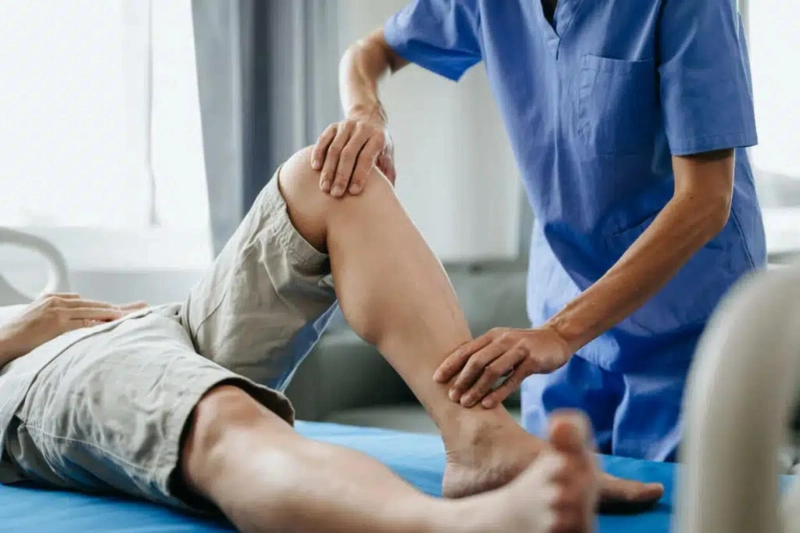Our bones and joints are the foundation of every movement we make—walking, bending, lifting, or even sitting still. When pain, stiffness, or swelling begins to interfere with these movements, it’s often a sign that something isn’t right. That’s when an orthopedic specialist steps in. These experts are trained to diagnose and treat conditions affecting the musculoskeletal system, which includes bones, joints, ligaments, tendons, and muscles. But have you ever wondered how orthopedic specialists pinpoint the exact cause of bone or joint issues? Let’s explore the step-by-step process of how these professionals reach an accurate diagnosis.
1. The Initial Consultation: Understanding the Patient’s History
Diagnosis begins long before any imaging test or physical examination. The first and most critical step is a detailed medical history. Orthopedic specialists spend time talking to patients about their symptoms, including:
- When the pain or stiffness started
- The exact location and severity of the discomfort
- Any recent injuries or accidents
- Past surgeries or medical conditions
- Lifestyle habits such as physical activity, posture, or work demands
This conversation helps the orthopedic specialist form a preliminary idea about what might be wrong. For instance, repetitive stress from certain jobs may lead to tendonitis, while a sudden injury might suggest a fracture or ligament tear. Family history is also considered because some bone and joint disorders, like arthritis or osteoporosis, can run in families.
2. Physical Examination: Assessing Function and Movement
Once the history is recorded, the specialist performs a physical examination to assess how the affected joint or bone behaves. The doctor may:
- Observe the patient’s posture and gait (how they walk)
- Check for visible deformities, swelling, redness, or muscle wasting
- Feel the joint or bone to identify tenderness, warmth, or irregularities
- Test the range of motion, strength, and flexibility
- Perform specific orthopedic tests—like the Lachman test for knee ligament injury or the drop-arm test for shoulder rotator cuff tears
These tests help narrow down possible conditions. For example, limited range of motion may suggest joint inflammation, while localized tenderness could point to a fracture or soft tissue injury.
3. Imaging Tests: Seeing Inside the Body
After an initial assessment, the orthopedic specialist often recommends imaging tests to visualize what’s happening inside the body. These tests help confirm the diagnosis and determine the extent of the problem.
X-rays
X-rays are the most common imaging method in orthopedics. They show the structure of bones and joints, revealing fractures, bone deformities, or signs of arthritis such as joint space narrowing and bone spurs.
Magnetic Resonance Imaging (MRI)
An MRI provides a detailed image of both bones and soft tissues like ligaments, tendons, and cartilage. It’s often used for diagnosing ligament tears (like ACL injuries), herniated discs, or cartilage damage.
Computed Tomography (CT) Scans
CT scans combine multiple X-ray images to create a 3D view of bones and joints. This is especially useful for complex fractures or bone tumors where precision is crucial.
Ultrasound
Ultrasound is a quick, non-invasive test that helps visualize soft tissues in real-time. It’s ideal for diagnosing tendon or muscle tears and guiding joint injections.
Each imaging method provides a unique view, helping the orthopedic specialist make a well-rounded and accurate diagnosis.
4. Laboratory Tests: Understanding the Underlying Cause
Sometimes, bone and joint problems stem from systemic conditions like infections, autoimmune diseases, or metabolic disorders. In such cases, laboratory tests become essential. Common tests include:
- Blood tests: Used to detect markers of inflammation (like ESR or CRP), infection, or autoimmune disorders such as rheumatoid arthritis.
- Calcium and Vitamin D levels: Low levels can indicate metabolic bone diseases like osteoporosis.
- Joint fluid analysis: If there’s joint swelling, fluid may be drawn from the joint to test for infection, gout crystals, or inflammatory markers.
These tests provide clues that imaging alone might miss, helping to uncover underlying causes of pain and dysfunction.
5. Diagnostic Injections: Pinpointing the Source of Pain
In some cases, it’s challenging to determine whether pain originates from a joint, muscle, or nerve. Diagnostic injections are used to isolate the problem area. A small amount of anesthetic is injected into the suspected joint or tissue—if the pain subsides temporarily, it confirms that area as the pain source.
This technique is especially useful for spinal pain, hip joint issues, or shoulder problems where multiple structures may overlap.
6. Bone Density Tests: Evaluating Bone Strength
For patients—especially older adults or postmenopausal women—bone weakness or fragility may contribute to fractures or chronic pain. A bone mineral density (BMD) test, commonly done using Dual-energy X-ray Absorptiometry (DEXA), measures the density of bones. It helps diagnose osteoporosis and determine the risk of future fractures.
Early detection through this test allows for preventive measures, including dietary changes, supplements, or medications to strengthen bone health.
7. Electromyography (EMG) and Nerve Conduction Studies
Not all joint pain comes from the joint itself—sometimes, nerves are involved. EMG and nerve conduction tests measure how well muscles and nerves function. These are vital when diagnosing conditions like carpal tunnel syndrome, sciatica, or nerve compression in the spine.
8. Arthroscopy: A Closer Look Inside the Joint
When other tests don’t provide clear answers, orthopedic specialists may use arthroscopy, a minimally invasive surgical technique. During this procedure, a small camera is inserted into the joint through a tiny incision. The specialist can directly view the cartilage, ligaments, and joint lining to diagnose (and often treat) the issue simultaneously.
Arthroscopy is commonly used for diagnosing problems in the knee, shoulder, or hip, and has the advantage of a shorter recovery time compared to open surgery.
9. Comprehensive Evaluation and Diagnosis
After gathering data from history, examination, imaging, and tests, the orthopedic specialist synthesizes all findings to form a precise diagnosis. This stage is crucial because many bone and joint conditions have overlapping symptoms. For instance, knee pain might stem from arthritis, ligament injury, or even referred pain from the hip or spine.
The goal is to identify not just what is wrong, but why it’s happening—whether due to wear and tear, trauma, infection, or an underlying disease.
10. Personalized Treatment Planning
Once the diagnosis is confirmed, the orthopedic specialist designs a customized treatment plan. This may include:
- Physical therapy and rehabilitation exercises
- Medications to reduce inflammation and pain
- Orthotic supports or braces
- Minimally invasive procedures such as joint injections
- Surgical intervention for severe cases like fractures or advanced arthritis
Accurate diagnosis ensures that patients receive the right treatment at the right time, leading to faster recovery and improved quality of life.
Why Choose a Skilled Orthopedic Specialist
Diagnosing bone and joint problems is a meticulous process that requires expertise, experience, and advanced diagnostic tools. A skilled orthopedic specialist not only identifies the root cause but also guides patients through effective, evidence-based treatment options.
If you are experiencing persistent joint pain, stiffness, or mobility issues, it’s essential to seek expert care. The Top Orthopedician in Gurgaon offers comprehensive diagnostic and treatment services using state-of-the-art imaging and modern techniques to restore movement and relieve pain.
Conclusion
Orthopedic specialists are like detectives of the musculoskeletal system. Through detailed history-taking, physical examination, and advanced diagnostic tools, they uncover the exact cause of pain and dysfunction. Whether it’s a minor injury or a chronic joint disorder, early and accurate diagnosis ensures faster recovery and prevents long-term complications.


